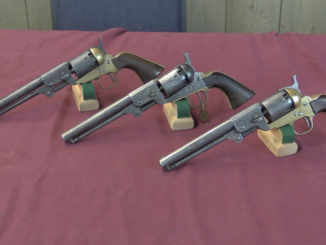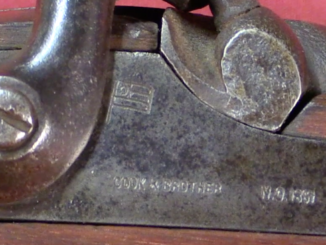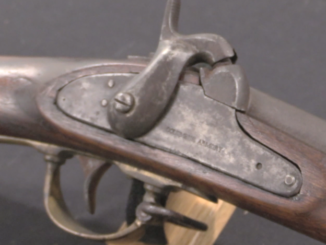In 1863, the Bilharz, Hall, & Co firm of Pittsylvania Court House, Virginia (now Chatham VA) received a contract to make 1,000 examples of a simple percussion cavalry carbine modeled after the US Model 1855 carbine. They would work until the end of 1864, but only make a total of 750-800 of them. These carbines are unnumbered externally, but most (although not this example) have what appears to be a serial number of the rear face of the barrel, hidden inside the stock.
Related Articles

Revolver
Griswold & Gunnison: The Best Confederate Revolver Makers
Standard: https://jamesdjulia.com/item/52430-6-397/ Presentation: https://jamesdjulia.com/item/51957-17-397/ Iron frame: https://jamesdjulia.com/item/51957-13-397/ Griswold and Gunnison were rather unique among Confederate revolver manufacturers for their ability to actually create a reliable and high quality product and produce it on a regular […]

Percussion
Cook and Brother of New Orleans – A Confederate Rifle Factory
Cook and Brother was one of the largest and most successful of the private ordnance factories in the South during the Civil War. It was formed by two British brothers who had moved to New […]

Antiques
A Very Rare Confederate Columbus Armory Carbine
Carbines made by the Columbus Armory are particularly scarce, and their history is not really well understood. They were manufactured by John Gray of Columbus SC, whose brother William Gray was a partner in another […]

I wish you would stop the political ads.
Watching on the webpage, rather than YouTube, I get no advertizing.
Youtube controls what ads are shown, not the channel creator.
I use the Brave browser, which has a build in ad blocker. Nice!
Great movie!
The major reason for the change from brass to pewter for “fitments” was the shortage of copper in the Confederacy. Once brass reclaimed from what we would have called “scrap drives” in WW2 was used up, there was no copper available for brass making.
All copper that could be found (even the coils in moonshine stills) was needed for the manufacture of percussion caps.
cheers
eon
Caps for primers can be made not only from copper.
At different times and in different countries, corresponding experiments were carried out.
Copper is optimal, but both lead and iron are quite applicable.
In addition, the caps were in paper cases and in ribbons.
It’s strange if they didn’t know it …